 |  |  |  |  |  |  |  |  |  |  |  |  |  |  |  |  |  |  |  |
| About two months ago my Analox O2EII Nitrox analyzer died. It always read zero regardless of the calibration knob position. I checked the battery (which was the original 9V) and it tested as good, but I tried another battery just to rule that out. It still read zero. I opened it up and checked the connections on the sensor which looked great. So I called up Analox in Huntington Beach and talked with Todd. He suspected it was the electronics, but asked me to send it to him so he could test it. I did and about 2 weeks later he called me to verify that it was the electronics, not the sensor. Since it died three years and two months after I bought it out of the three year warranty period, and he could do nothing for me. He recommended I buy a new one.In the three years I had it I only checked tanks at home with it and did not take it with me on trips. Thus it saw incredibly light duty in those three plus years, but still died. The original battery was still good. It was carefully stored in an Otter box. It saw only infrequent gentle use, and it died. This fact did not make me want to rush out and buy another Analox analyzer. Thus I decided to try something different this time.One feature which I was wanted was one touch calibration. In these days of dirt cheap microcontrollers there is absolutely no reason to have to adjust a potentiometer to calibrate the analyzer. The pots are touchy electromechanical devices that prone to corrosion in a salt water environment and usually wear in the useful area so they become hard t adjust on heavily used analyzers.I did some searching with Google and discovered maxtec made several models with one touch calibration. I looked at the Maxtec web site it was not obvious if 100% O2 was needed which is used in some of their examples so I called them up. The application engineer told me that the analyzer can be calibrated on either air (20.9% O2) or on pure oxygen. The unit is smart enough to know which one you are using. The Handi+ spec sheet and drawing looked like what I wanted, so I searched some more for places selling it and found O2connection.com had the maxtex Handi+ analyzer for $175 with shipping included, so I ordered it online. They did not ship it out the next business day, but did so two days later with a message that they had upgraded my shipping to overnight UPS to make up for the delay. |
| | | | | | | | | | | | | | | | | | | | |
| | | 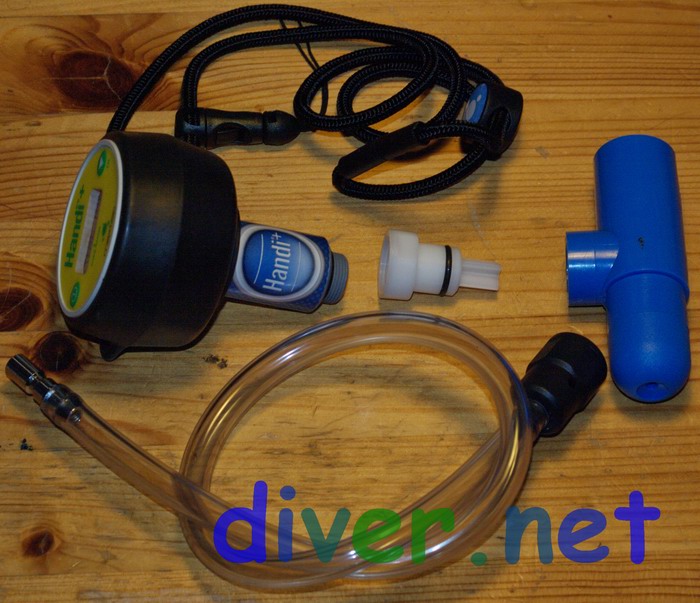 | | |
I opened the box and found that it contained the analyzer, an adaptor for measuring directly from the tank, an adaptor from measuring from an inflator hose, a neck strap, a laminated quick reference card, and the manual. |
| | | | | | | | | | | | | | | | | | | | |
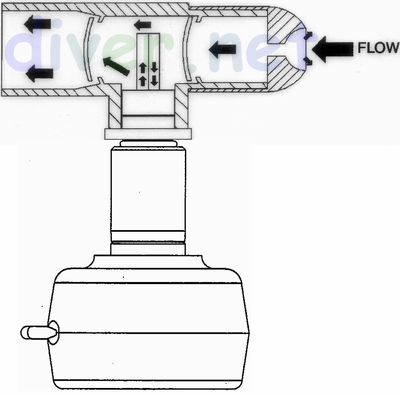 | | 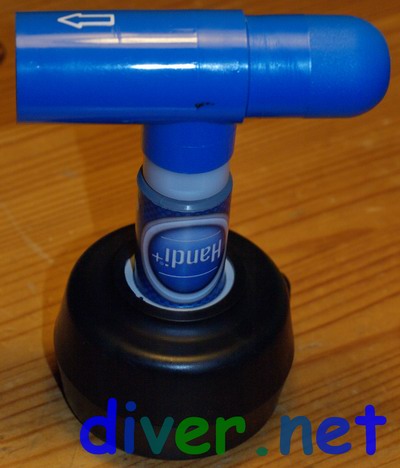 | |
The construction of the tank adaptor was interesting. The white piece screws directly onto the end of the analyzer and this inserts with a seal into the side of the blue tank adaptor. The blue tank adaptor contains two flap check valves that trap the gas in the internal chamber so that it remains there even when the flow from the tank is shut off. |
| | | | | | | | | | | | | | | | | | | | |
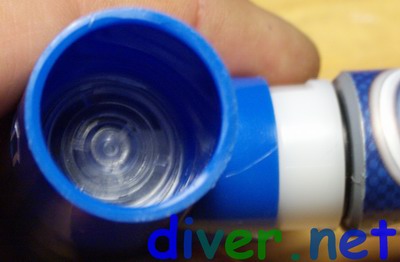 | | 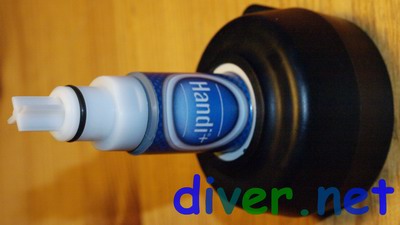 | |
| | | | | | | | | | | | | | | | | | | | |
 | | 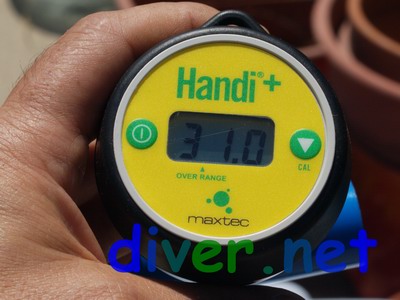 | |
|
You can see in the pictures above that when I measure the O2 content of my tank and then remove the analyzer once the reading has stabilized. The reading remains on the analyzer when removed until because the sampled gas is trapped by the check valves.To calibrate the unit you remove analyzer to the air and hold down the cal button for five seconds. It then does a calibration and reads 20.9%.
|
| | | | | | | | | | | | | | | | | | | | |
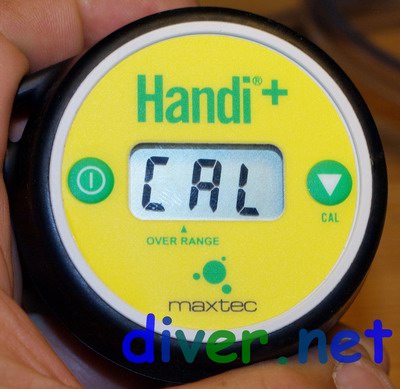 | |  | |
| | | | | | | | | | | | | | | | | | | | |
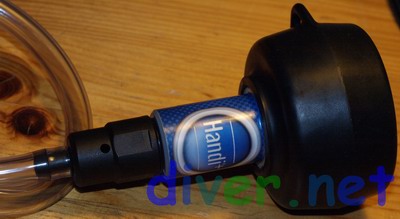 | | The inflator hose adaptor screws onto the end of the analyzer in place of the white piece part of the tank adaptor. It has a flow restricted nipple that attached into the inflator hose, a clear hose, and a threaded black plastic cup with two small holes for gas to exit. This unit contains no check valves so must be in place with the gas on for a reading. |
| | | | | | | | | | | | | | | | | | | | |
| The specification for the Handi+ says it uses one CR2450 battery that is not user replicable. The one battery should be good for 74,000 measurements thus probably never need to be replaced during the two year warranty period. However assuming the non-removable MAX-250 sensor which is glued into place does not expire first the battery will die at some point. Although the unit was not made for users to open it can be seen be sliding the rubber boot down that there are two open/pry points on opposite sides of the unit. Not wanting to void my warranty I did not attempt to open the unit, however I suspect it can be opened and worked if needed once the two-year warranty has expired. You can date your sensor based on the serial number using a Maxtex serial number chart. | |  | |
| | | | | | | | | | | | | | | | | | | | |
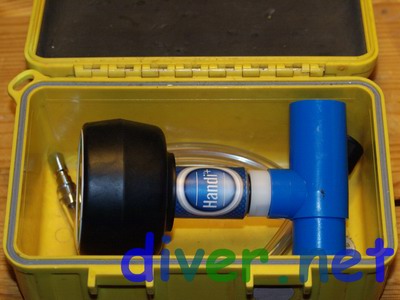 | | The one thing I liked about my previous Analox unit was that it was one piece. Thus there were not multiple pieces to keep track of. I did have an Otter Box I kept that unit in and luckily all of the pieces of this maxtec unit fit in my Otter Box. | |
| | | | | | | | | | | | | | | | | | | | |
| | Pros: - Small size
- One touch calibration
- Inexpensive
- Comes with all needed accessories
| | | Cons: - Non-replaceable sensor & battery
- Multiple pieces easier to lose than a single piece unit
| |
| | | | | | | | | | | | | | | | | | | | |
| Conclusion: This would not be a good unit for use on a dive boat or in a shop because the multiple pieces would most likely get lost. However for my personal use I think this is a good unit. I like the price and features. Time will tell how it holds up under use. |
| | | | | | | | | | | | | | | | | | | | |
| | | ©2008 Chris Grossman, diver.net | | |
| | | | | | | | | | | | | | | | | | | | |

